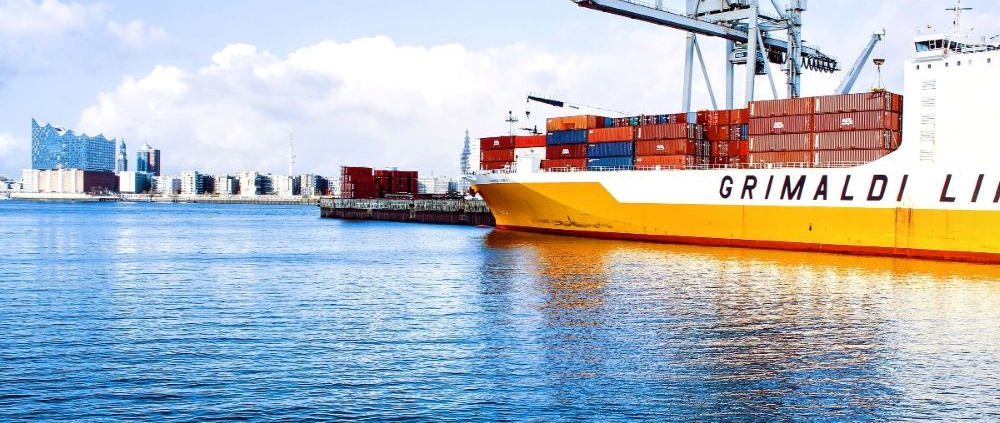The recently launched Pyxis Ocean cargo ship uses giant foldaway ‘WindWings’ to help supplement engine power and could cut lifetime carbon emissions by 30 per cent.
The Cargo Ship
A Mitsubishi Corporation cargo ship is currently demonstrating the WindWings, developed by BAR Technologies and Yara Marine Technologies, during its six week-long maiden voyage from China to Brazil. The ship, chartered by Cargill Ocean Transportation, left from Singapore on 25 August carrying 81,000 tonnes of cargo.
The WindWings
The extraordinary features of the Pyxis Ocean cargo ship are its two rigid, foldaway 37.5-metre-tall steel and fibreglass ‘sails’ (WindWings) which automatically pivot to catch the wind. The WindWings, each made up of a centrally pivoted 10-metre-wide section with two five-metre-wide wings on either side can be folded down onto the cargo ship’s deck for arrival at ports and for passing through bridges or canals.
BAR Technologies estimates that the wind power harnessed by the WindWings, which can be retrofitted to many cargo ships (but not container ships), could deliver an average fuel saving of up to 30 per cent (on new build ships) and could save as much 1.5 tonnes of fuel per day on an average global route. Adding four wings on cargo could, therefore, save a massive 6 tonnes of fuel per day, stopping 20 tonnes of CO2 being produced. BAR Technologies says the WindWings make the savings by combining “wind propulsion with route optimisation” and are initially aimed at being fitted to “bulk carriers and tankers.”
Targets
With more than 90 per cent of world trade being carried across oceans by 90,000 fossil-fuel powered marine vessels, the global freight shipping industry is a major producer of CO2 emissions, which contribute to climate change (and acidification). For example, it’s been estimated that the global shipping industry is responsible for more than 3 per cent of global CO2 emissions and, if it were a country, it would be the sixth largest producer of greenhouse gas (GHG) emissions.
For these reasons, the International Maritime Organisation (IMO) set the goal for the shipping industry ultimately arriving at a 50 per cent reduction in GHG emissions from 2008 levels (CO2, sulphur oxide and other gasses) by 2050.
Adding WindWings to cargo ships could, therefore, be one relatively fast solution, in the absence of zero-carbon fuel for ships or a clear decarbonisation strategy, to at least begin reducing GHG emissions.
Innovation
John Cooper, Chief Executive Officer, BAR Technologies said of the WindWings: “If international shipping is to achieve its ambition of reducing CO2 emissions, then innovation must come to the fore. Wind is a near marginal cost-free fuel and the opportunity for reducing emissions, alongside significant efficiency gains in vessel operating costs, is substantial.”
What Does This Mean For Your Organisation?
When the alarm bells really started ringing back in 2008 about how the global shipping industry was producing more CO2 than most countries, twice as much as the air transport industry, and more than 3 per cent of global emissions, the ambitious but necessary 50 per cent cut by 2050 target was set. However, with the world still reliant on cargo ships for 90 per cent of international trade, no zero-emissions fuel on the horizon, a perceived relative inactivity among freight operators in trying to meet the target, and no clear strategy, the WindWings idea looks like a realistic option to get started.
Although there’s ‘no one fits all’ (plus it may not work for container ships), they have been designed to be workable on the most common vessels sizes (using either 3 or 4 WindWings). The fact that they’re fully automated (touch of a button), can be folded away, have a lower power consumption and yet have the capacity to make major fuel and CO2 emission savings mean that, as long as they are affordable and reliable, they could provide a practical, and sustainable way forward for the freight shipping industry until other options are available. There’s also a kind of irony to the idea that the leading technology of today for greener shipping takes ships back full circle to the days of sails, with these just being more high-tech versions – of an old solution to a newer problem.
If you would like to discuss your technology requirements please:
- Email: hello@gmal.co.uk
- Visit our contact us page
- Or call 020 8778 7759
Back to Tech News



